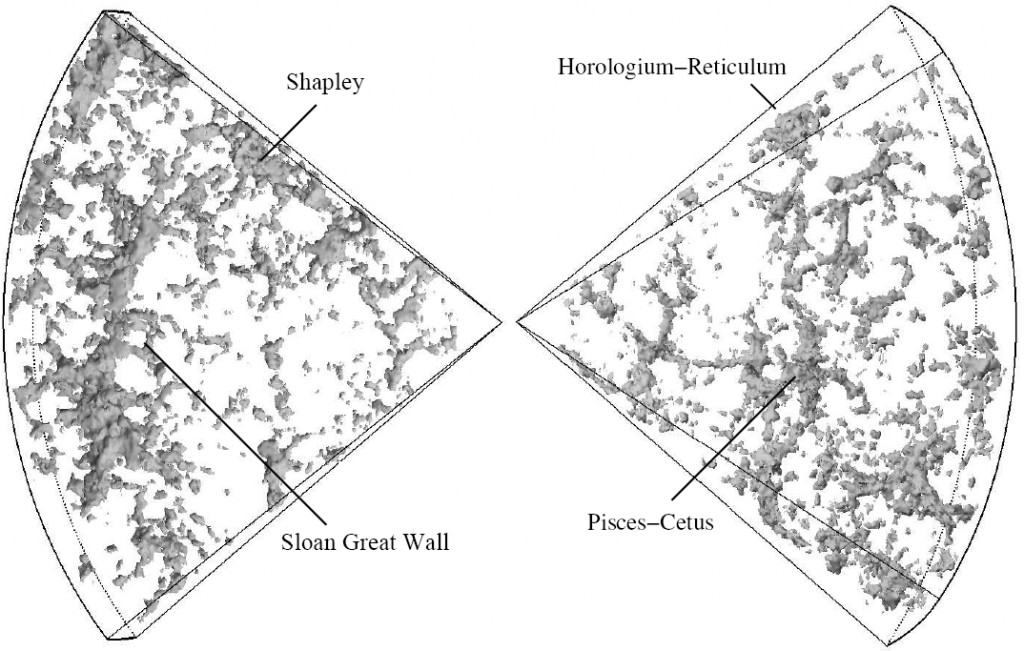But What About Light From Distant Stars? (Origins Debate: Part V)

Part V in the series: Highlights of the Los Alamos Origins Debate
An entirely legitimate question then is how we could possibly see stars millions and billions of light years away if the earth is so young. Part of the reason scientists like myself can have confidence that good science will vindicate a face-value understanding of the Bible is because we believe we have at least an outline of the correct answer to this important question.1
This answer draws upon important clues from the Bible while applying standard general relativity. The result is a cosmological model that differs from the standard Big Bang models in two essential respects. First, it does not assume the so-called cosmological principle, and, second, it invokes inflation at a different point in cosmological history.
The cosmological principle is the assumption that the cosmos has no edge or boundary or center and, in a broad-brush sense, is the same in every place and in every direction. This assumption concerning the geometry of the cosmos has allowed cosmologists to obtain relatively simple solutions of Einstein’s equations of general relativity. Such solutions form the basis of all Big Bang models. But there is growing observational evidence that this assumption is simply not true. A recent article in the journal Nature, for example, describes a fractal analysis of galaxy distribution to large distances in the cosmos that contradicts this crucial Big Bang assumption.2
If instead the cosmos has a center, then its early history is radically different from that of all Big Bang models. Its beginning would be that of a massive black hole containing its entire mass. Such a mass distribution has a whopping gradient in gravitational potential which profoundly affects the local physics, including the speed of clocks. Clocks near the center would run much more slowly, or even be stopped, during the earliest portion of cosmic history.3 Since the heavens on a large scale are isotropic from the vantage point of the earth, the earth must be near the center of such a cosmos. Light from the outer edge of such a cosmos reaches the center in a very brief time as measured by clocks in the vicinity of the earth.

In regard to the timing of cosmic inflation, this alternative cosmology has inflation after stars and galaxies form. It is noteworthy that within the past year two astrophysics groups studying high-redshift type Ia superdecae both conclude cosmic expansion is greater now than when these stars exploded. The article in the June 1998 issue of Physics Today describes these “astonishing” results which “have caused quite a stir” in the astrophysics community.5 The story amazingly ascribes the cause to “some ethereal agency.”
Indeed, the Bible repeatedly speaks of God stretching out the heavens:
- “…O LORD my God, You are very great, … stretching out heaven as a curtain…” (Psalm 104:1-2);
- “Thus says God the LORD, who created the heavens and stretched them out…” (Isaiah 42:5);
- “… I, the LORD, am the maker of all things, stretching out the heavens by Myself…” (Isaiah 44:24);
- “It is I who made the earth, and created man upon it. I stretched out the heavens with My hands, and I ordained all their host.” (Isaiah 45:12).
As a Christian who is also a professional scientist, I exult in the reality that “in six days the LORD made the heavens and the earth” (Exodus 20:11).
May He forever be praised.
-
[18] D. R. Humphreys, Starlight and Time, Master Books, Colorado Springs, 1994. ↩︎
-
[19] P. Coles, “An Unprincipled Universe?,” Nature, 391, 120-121, 1998. ↩︎
-
[20] D. R. Humphreys, “New Vistas of Space-Time Rebut the Critics,” Creation Ex Nihilo Technical Journal, 12, 195-212, 1998. ↩︎
-
Edwin Hubble, The Observational Approach to Cosmology, The Clarendon Press, Oxford 1937, 50-59, as cited in John Hartnett, Starlight, Time and the New Physics, Creation Book Publishers, 2007, p. 74 ↩︎
-
[21] B. Schwarzschild, “Very Distant Superdecae Suggest that the Cosmic Expansion is Speeding Up,” Physics Today, 51, 17-19, 1998. ↩︎
Posts in this series
- Introduction: Highlights of the Los Alamos Origins Debate
- Can random molecular interactions create life? (Origins Debate: Part I)
- Just How Do Coded Language Structures Arise? (Origins Debate: Part II)
- But What About the Geological / Fossil Record? (Origins Debate: Part III)
- But How Is Geological Time To Be Reckoned? (Origins Debate: Part IV)
- But What About Light From Distant Stars? (Origins Debate: Part V)